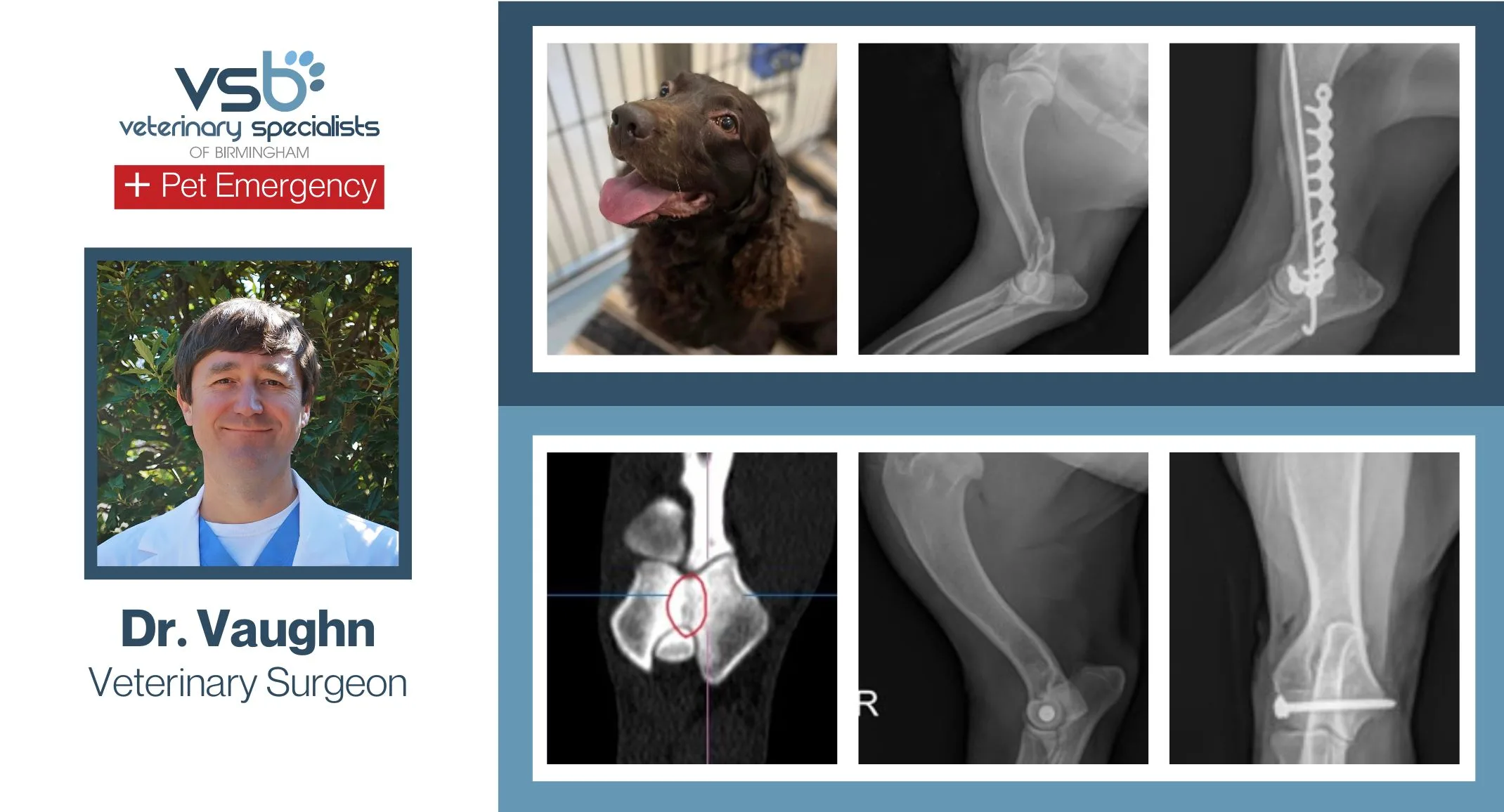Incomplete Ossification of the Humeral Condyle in a Boykin Spaniel
Case Study & Surgery

Beau was a 4-year-old male Boykin Spaniel which presented to VSB as an emergency. He lives and works on a hunting plantation. He developed a severe (grade 4/4) lameness of the left forelimb while running through a field.
During ER examination he was found to have a highly instable left elbow. Radiographs revealed an intercondylar (T-Y) fracture of the left humerus. He was transferred to Dr Vaughn for surgical treatment.
Beau’s fracture was stabilized via open reduction and internal fixation with a String-of-pearls plate, intramedullary pin, and transcondylar screw. He was treated with a supplemental Spica splint of the limb because of the complexity of the injury and his enthusiasm for life.
He was liberated from his splint 12 weeks postoperatively. His IM pin was also removed. He began conservative activity at that time. Once 18 weeks postoperative he was cleared for release to unrestricted activity.
Due to the minimal trauma that caused Beau’s severe injury, Dr Vaughn was concerned that he suffered from Incomplete Ossification of the Humeral Condyle (IOHC). This is a heritable developmental condition in which the intercondylar growth plate fails to completely fuse leading to a weakness of the humeral condyle.
IOHC has a high prevalence of occurring bilaterally. Spaniel breeds are known to have a predisposition for IOHC. Labrador retrievers, English Pointers, German Shepherd Dogs, Rottweilers, Yorkshire terriers, German Wachtels, and Tibetan Mastiffs have also been reported with IOHC. After consultation with Dr Vaughn, Beau’s owners decided to have his right elbow evaluated by CT imagery.
CT of the right elbow showed that Beau did suffer from bilateral IOHC. Because Beau was a highly active dog, his owners were motivated to protect the right humerus from injury if possible.
Since the right elbow had not been subjected to fracture, Dr Vaughn was able to use fluoroscopy to minimally invasively place a transcondylar screw prophylactically. Recovery from this procedure was 4 weeks of conservative activity which went well.
Beau has returned to hunting. He and his owners are very happy. He now sleeps in his owner’s bed. Beau was an exceptional patient with exceptional owners who were able to maximize the skills and technology that Dr Vaughn and VSB offer.
